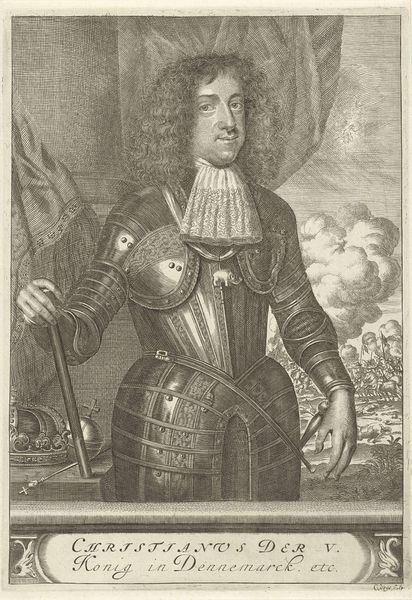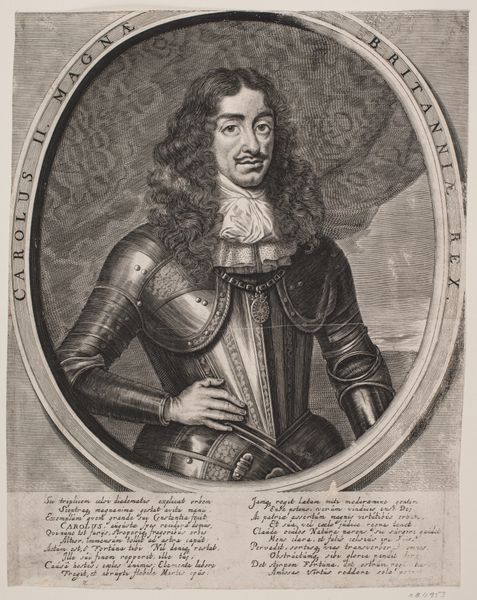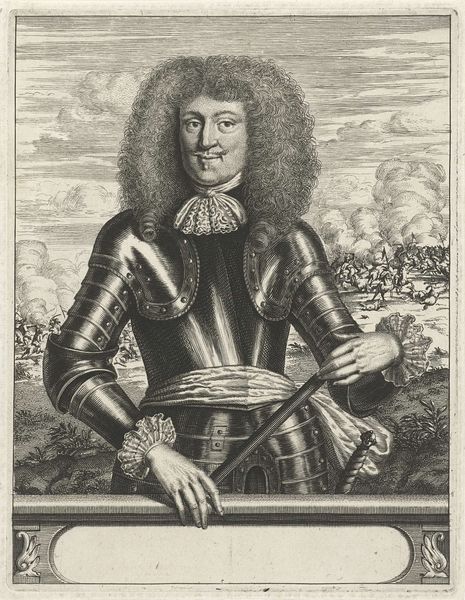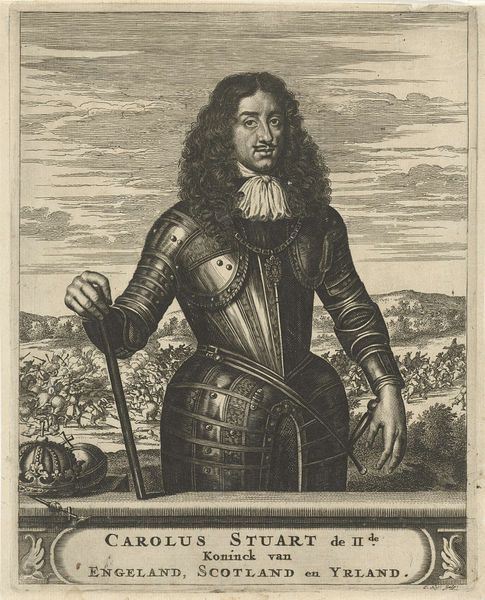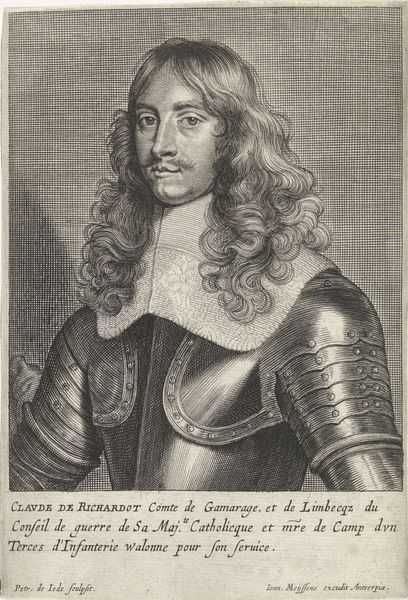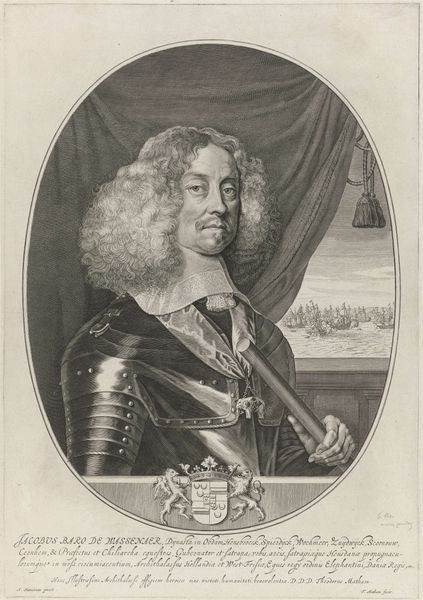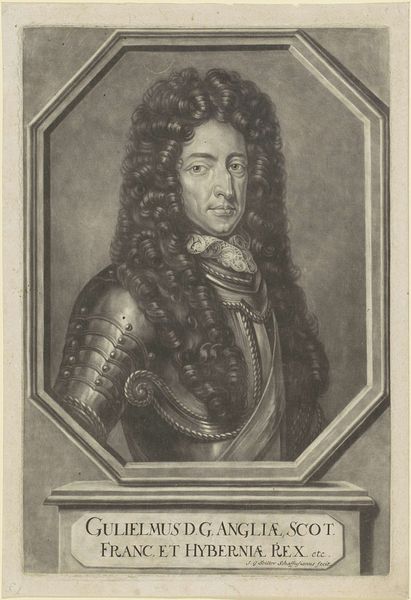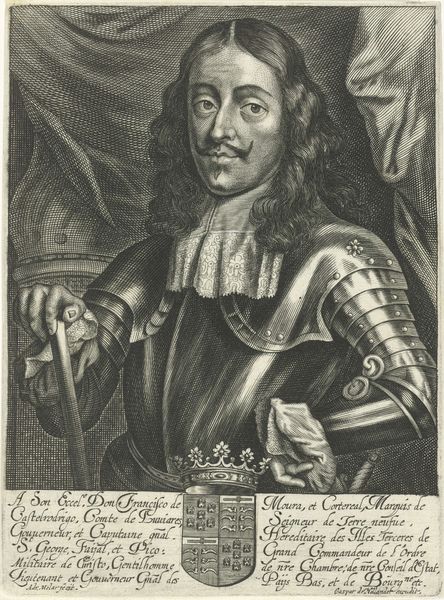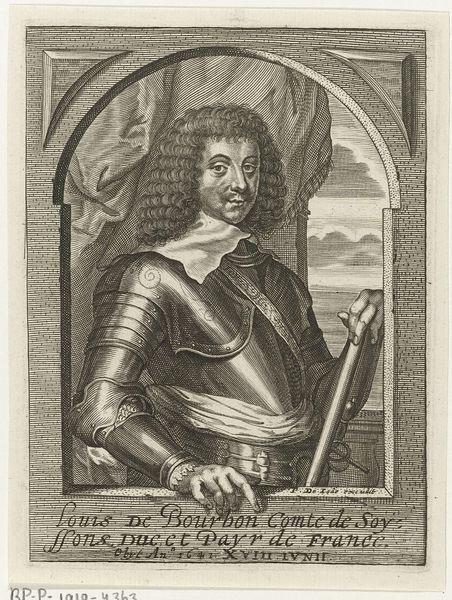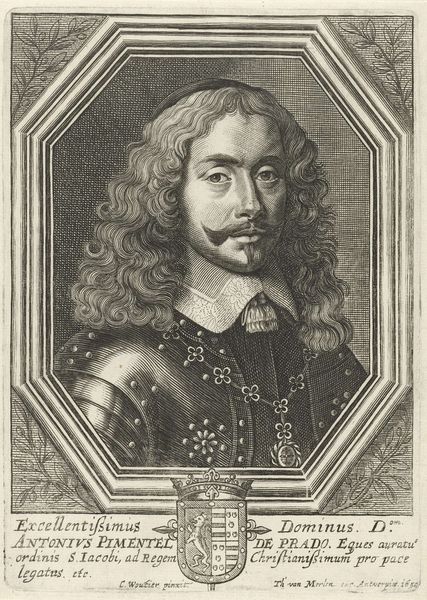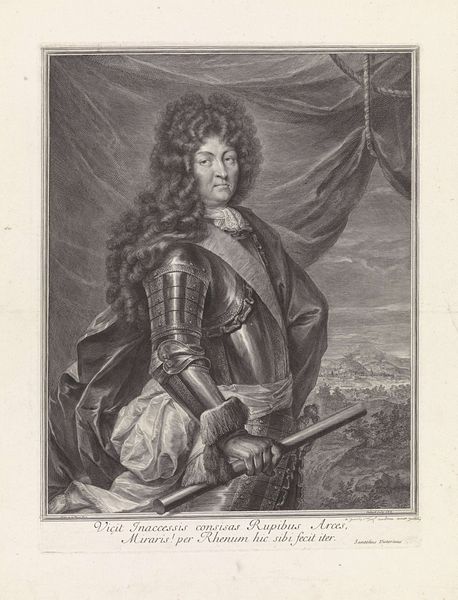
metal, engraving
#
portrait
#
baroque
#
metal
#
caricature
#
portrait reference
#
portrait drawing
#
history-painting
#
engraving
Dimensions: height 347 mm, width 284 mm
Copyright: Rijks Museum: Open Domain
Editor: Here we have Cornelis van Dalen the Younger’s "Portrait of Leopold I, Emperor of Germany," created sometime between 1648 and 1664. It's an engraving on metal, currently held at the Rijksmuseum. What strikes me is the incredible detail in the armor and the almost exaggerated formality of the pose. How should we interpret this work? Curator: Let's start with the material itself. The choice of metal, the engraving process...these weren't arbitrary. Engraving allowed for mass production, making Leopold's image accessible. This speaks to the burgeoning market for royal portraiture and the politics of image distribution at the time. How does the meticulous rendering of the armor—essentially industrial output—intersect with Leopold’s image as a divinely appointed ruler? Editor: I hadn't thought about it that way. The armor almost seems to flatten him out, to turn him into a commodity, while also showing him in power. Does the engraving process somehow "democratize" the portrait, bringing the Emperor down to the level of the commoner who consumes this imagery? Curator: Exactly. Consider the social context: Who were the engravers? What workshops produced these images, and what was their relationship to the imperial court? It is a form of cultural capital production, relying on labor. The very act of reproducing his likeness changed the perception of power. And what’s particularly interesting about this case is, in a sense, the contrast in the perfection and labor needed for the armor as an object of material culture with the soft almost smirking face, as if above the work that made the material world itself. What’s more valuable: his image, or his physical presence? Editor: So it is less about the artistic interpretation of Leopold himself, and more about the industrial means by which he could be reproduced and consumed as an image? I’ll never look at a portrait the same way! Curator: Precisely. And thinking critically about those means can unlock so much. It is only when analyzing labor, tools and context that the social status can really shine through.
Comments
No comments
Be the first to comment and join the conversation on the ultimate creative platform.
